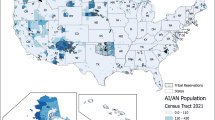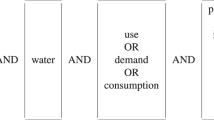Abstract
Data currently available on drinking water intakes do not support dietary exposure estimates for contaminants that have acute effects lasting less than 24 h. Realistic exposure estimates for these types of contaminants in drinking water require detailed information on amounts and time of consumption for each drinking occasion during a day. A nationwide water consumption survey was conducted to address how often, when, and how much water is consumed at specific times during the day. The survey was conducted in two waves, to represent two seasons, and the survey instrument consisted of 7-day water consumption diaries. Data on total daily amounts consumed, number of drinking occasions per day, amounts consumed per drinking occasion, and intervals between drinking occasions show larger between-subjects variation than within-subject variation. Statistically significant associations were also observed between drinking water consumption patterns and participants’ ages and sex and geographical regions in which these participants live. The number of drinking occasions on a given day varied from 0 to 19, with the majority of respondents reporting 6 or less drinking occasions per day. The average interval between drinking occasions varied from 1 to 17 h, with 57% of the person-days reporting average intervals at least 3 h apart. The mean amount consumed per drinking occasion showed little association with the number of drinking occasions and fluctuated between 8 and 10 oz. To our knowledge, this survey is the only source of information on within-day patterns (i.e., when and how much) of drinking water consumption for a nationally representative sample of the US population. The detailed water consumption data from this survey can be used to support less than 24-h dietary exposure estimates for contaminants in drinking water.
This is a preview of subscription content, access via your institution
Access options
Subscribe to this journal
Receive 6 print issues and online access
$259.00 per year
only $43.17 per issue
Buy this article
- Purchase on Springer Link
- Instant access to full article PDF
Prices may be subject to local taxes which are calculated during checkout










Similar content being viewed by others
Notes
For access to the data from the survey, please contact DWCS Baver CropScience, Product Safety Management, P.O. Box 12014, RTP NC 27709-2014.
The NET maintains a diary panel of 2000 households to track the consumption habits of the US population. For a 2-week period, panel households complete a daily diary, recording consumption information for all members in the household.
We have no information from NPD relating to the potential overlap between the sample of households drawn from the HTI panel for our survey and the 2000 households included in the NET panel.
All study participants who returned a completed diary were eligible for a drawing to win one of twenty-five $100 cash prizes
For seven subjects, all the amount entries in most or all time intervals were filled, and for one subject the entries were recorded in a “diagonal” pattern, with amounts increasing by one category at each time interval.
Contributed by 40 participants in the DWCS.
References
Exponent. DEEM™. (http://www.exponent.com/practices/foodchemical/deem.html accessed 5/5/08) 2008.
Institute for Social and Economic Research Multinational Time Use Study (MTUS). (http://iserwww.essex.ac.uk/mtus/world5.5/chapter1.php?wantPrint accessed 8/09/04) 2004.
International Life Science Institute (ILSI). CARES®. (http://cares.ilsi.org/ accessed 8/10/04) 2004.
Moshfegh A.J., and Goldman J. Water Intake Collection in the Hational Federal Dietary Surveys: Continuing Survey of Food Intakes by Individuals and What We Eat in America (Abstract 670), NHANES. 17th Annual Conference of the Ibnternational Society of Exposure Analysis, Research Triangle Park, NC, USA. October 17, 2007.
National Products Database (NPD) (www.npd.com accessed 8/11/04) 2004.
NPD's Group National Eating Trends® (NET®). (http://www.npdfoodworld.com/foodServlet?nextpage=categories_net.html accessed 8/11/04) 2004.
U.S. Department of Agriculture (USDA). CSFII Data Set and Documentation: The 1994–96, 1998 Continuing Surveys of Food Intakes by Individuals. Food Surveys Research Group. Beltsville Human Nutrition Research Center. Agricultural Research Service. April 2000.
Witschi J. Short Term Dietary Recall and Recording Methods. In: Willett W (ed.). Nutritional Epidemiology Oxford University Press, New York, NY, 1990.
Acknowledgements
These analyses were supported, in part, by Bayer CropScience.
Author information
Authors and Affiliations
Corresponding author
Rights and permissions
About this article
Cite this article
Barraj, L., Scrafford, C., Lantz, J. et al. Within-day drinking water consumption patterns: Results from a drinking water consumption survey. J Expo Sci Environ Epidemiol 19, 382–395 (2009). https://doi.org/10.1038/jes.2008.28
Received:
Accepted:
Published:
Issue Date:
DOI: https://doi.org/10.1038/jes.2008.28
Keywords
This article is cited by
-
Factors associated with water consumption among children: a systematic review
International Journal of Behavioral Nutrition and Physical Activity (2019)
-
Drinking water consumption patterns among adults—SMS as a novel tool for collection of repeated self-reported water consumption
Journal of Exposure Science & Environmental Epidemiology (2018)
-
A comparison of drinking behavior using a harmonized methodology (Liq.In 7 ) in six countries
European Journal of Nutrition (2018)
-
Estimating drinking-water ingestion and dermal contact with water in a French population of pregnant women: the EDDS cohort study
Journal of Exposure Science & Environmental Epidemiology (2015)



